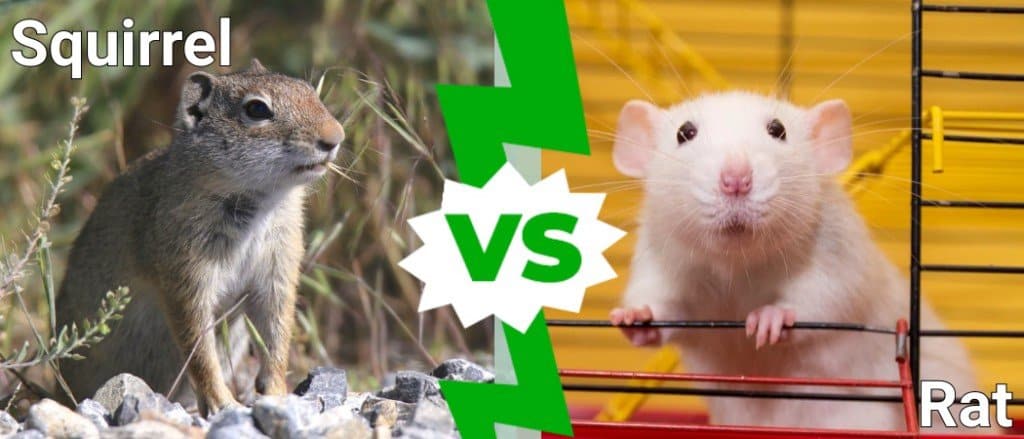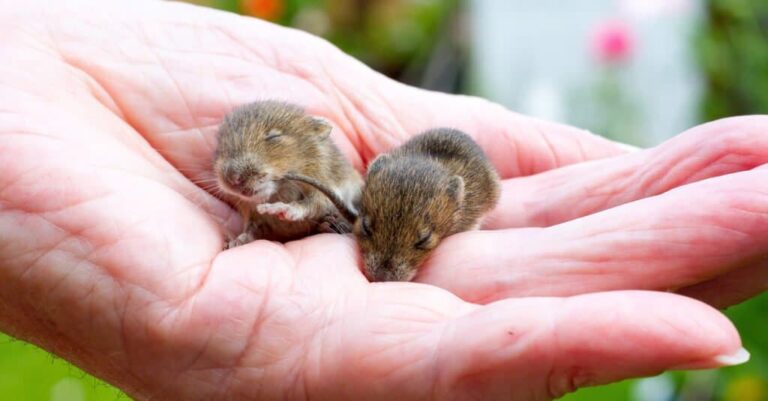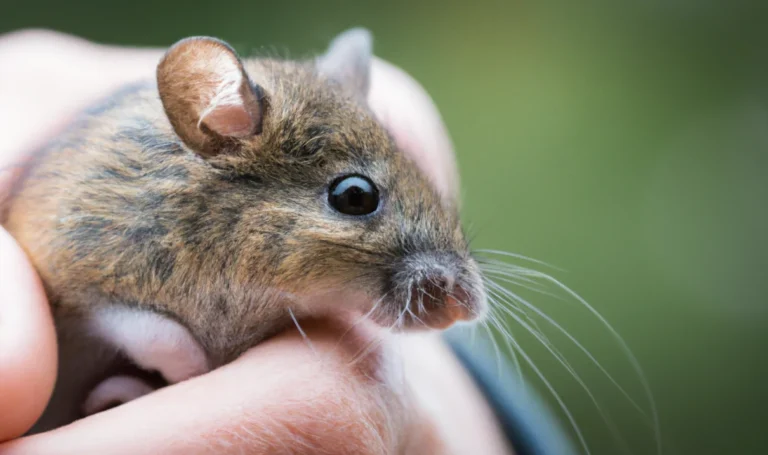Mouse Poop or Squirrel Poop? Spot the Difference Easily!
Overview
The appearance of squirrel and mouse droppings presents major clues to identify local pest varieties. Determining the difference between mouse and squirrel droppings proves crucial for both pest management operations and prevention practices and space hygiene maintenance.
The following detailed information will teach readers how to spot differences between the droppings alongside highlighting health risks and prevention advice.
Why Understanding Droppings is Crucial
Recognizing the type of droppings in your home or yard can help in:
- Identifying pest problems: Knowing whether you are dealing with mice or squirrels determines the approach for eradication.
- Ensuring health safety: Both types of droppings can carry diseases.
- Protecting property: Squirrels and mice can cause different types of damage.
What Do Chipmunk Droppings Look Like?
Key Differences Between Mouse Poop and Squirrel Poop
Different species of droppings earned by mice and squirrels present unique physical attributes including their dimensions as well as their form and surface features. It is essential to understand these differences in order to make proper identifications.
Visual Identification
| Feature | Mouse Poop | Squirrel Poop |
|---|---|---|
| Size | Small, about 1/8 to 1/4 inch long | Larger, approximately 3/8 to 1/2 inch long |
| Shape | Cylindrical, with pointed ends | Oblong, often with slightly rounded ends |
| Color | Dark brown to black | Brown to reddish-brown, depending on diet |
| Texture | Smooth, hard when fresh | Rougher texture, slightly softer than mouse poop |
| Quantity | Scattered piles or lines near food sources | Often in clusters near nesting areas |
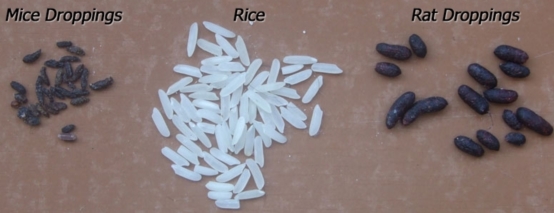
Health Risks Associated with Mouse and Squirrel Poop
Both types of droppings pose potential health hazards. Let’s explore their risks:
Mouse Poop
- Diseases Spread:
- Hantavirus: Carried by rodent feces and transmitted through airborne particles.
- Salmonella: Contaminates food and surfaces.
- Leptospirosis: Spread through contact with infected feces or urine.
- Allergies:
- Mouse droppings can trigger asthma and allergies in sensitive individuals.
Squirrel Poop
- Diseases Spread:
- Leptospirosis: Similar to mice, transmitted through feces.
- Lyme Disease: Squirrels can be hosts for ticks that carry Lyme disease.
- Salmonella: Can contaminate water and food sources.
- Parasites:
- Squirrels may carry roundworms, posing risks to humans.
Detailed Comparison Table: Mouse Poop vs. Squirrel Poop
| Aspect | Mouse Poop | Squirrel Poop |
|---|---|---|
| Length | 1/8 to 1/4 inch | 3/8 to 1/2 inch |
| Width | Narrow | Wider than mouse droppings |
| Distribution | Scattered, found in lines or random piles | Clumped together in specific areas |
| Freshness Indicator | Shiny when fresh, dries quickly | Softer initially, hardens over time |
| Associated Smell | Strong ammonia-like odor | Less pungent but noticeable |
| Nearby Evidence | Chewed wires, gnawed furniture, small holes | Gnawed wood, shredded insulation, nesting debris |
Preventing Mouse and Squirrel Intrusion
Prevention stands as the essential method to prevent droppings from appearing in your dwelling areas. For protecting your house follow these steps.
1. Seal Entry Points
- Mice: Gaps of 1/4 inch should be sealed using steel wool or caulk materials.
- Squirrels:Install metal mesh to close any substantial holes which are located near roofs and vents.
2. Eliminate Food Sources
- Mice: Store food in airtight containers and clean crumbs immediately.
- Squirrels: Avoid leaving pet food or birdseed outside.
3. Declutter Spaces
- Mice: Reduce clutter in basements and garages where mice can nest.
- Squirrels: Trim tree branches near roofs to discourage squirrel entry.
4. Use Deterrents
- Mice: Ultrasonic repellents, peppermint oil sprays.
- Squirrels: Squirrel-proof bird feeders, motion-activated sprinklers.
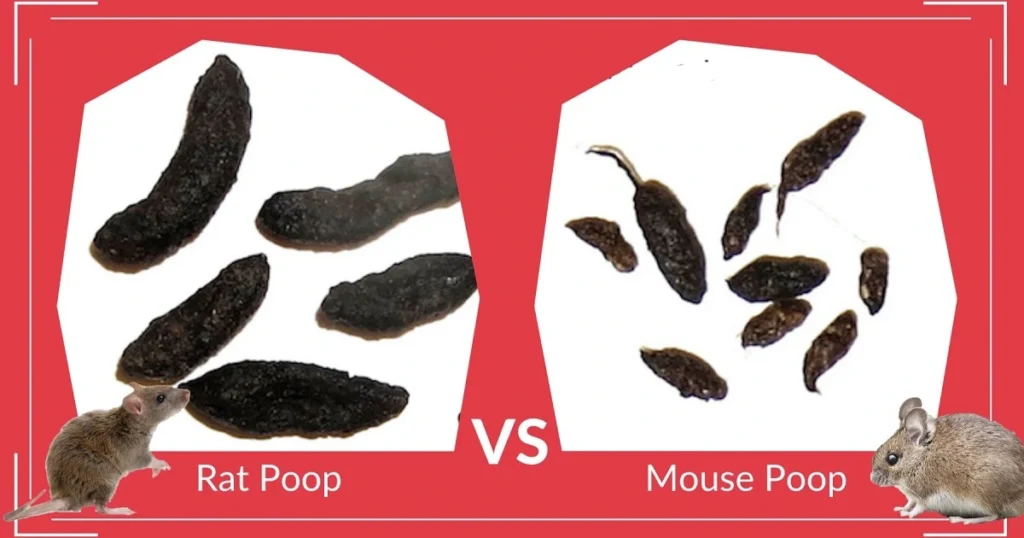
How to Safely Clean Droppings
It is vital to handle droppings properly because exposure to dangerous pathogens would otherwise occur.
Steps for Cleaning Mouse or Squirrel Droppings:
- Wear Protective Gear: To prevent exposure both by touch and breathing use protective gloves with a face mask.
- Ventilate the Area: Open windows for fresh air.
- Prepare a Disinfectant: Use bleach diluted with water (1:10 ratio).
- Soak Droppings: Saturate the droppings with the prepared solution before allowing it to rest for five minutes.
- Remove Droppings: Use disposable paper towels to pick up the waste.
- Dispose Properly: Place waste inside a plastic bag before putting it in outdoor trashes bins.
- Clean Tools and Surfaces: Disinfect brooms dustpans, or vacuums used in the area.
Signs of Infestation
The observation of droppings remains a single sign which indicates pest presence in an area. Look for additional signs:
Mouse Infestation:
- Gnaw marks on furniture or wires.
- Nests made from shredded paper or fabric.
- Scurrying sounds, especially at night.
Squirrel Infestation:
- Scratching noises in attics or walls during the day.
- Chewed openings in roofs or vents.
- Piles of acorns or nuts near droppings.
Professional Pest Control
If droppings persist despite preventive measures, it might be time to consult professionals. Pest control services can:
- Accurately identify the pest species.
- Apply safe and effective treatments.
- Provide long-term solutions to prevent recurrence.
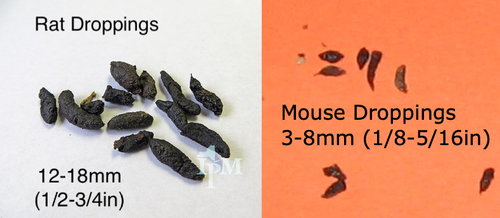
FAQs
Q1: How can I tell mouse poop from squirrel poop?
The cylindrical shape of mouse droppings shows points at both ends whereas squirrel droppings have oblong size along with round ends.
Q2: Are mouse and squirrel droppings dangerous?
Yes, both can carry diseases like salmonella and leptospirosis, posing health risks.
Q3: What’s the best way to clean droppings?
Put on gloves and mask before you apply a disinfectant to droppings which need proper disposal in sealed bags.
Q4: Can I prevent droppings in my home?
Yes, by sealing entry points, eliminating food sources, and using repellents, you can significantly reduce the likelihood of pests.
Q5: When should I call pest control?
Infestations need professional assistance when droppings maintain or additional signs of infestation appear.
Conclusion
Finding mouse and squirrel droppings may be challenging because their droppings resemble each other but their dimensions together with their surface qualities and hazard levels remain different. Correct pest identification enables proper deployment of control methods as well as the promotion of safety standards. Homeowners can easily keep their residence free from pests and disease by implementing proper prevention strategies along with proper cleaning protocols.

